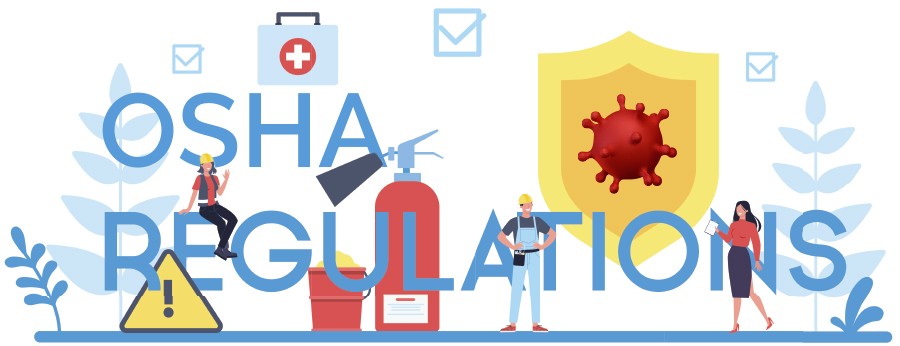COVID-19 Opens the Door for New OSHA Regulations

It’s almost ironic that as it celebrates 50 years of worker protections, the Occupational Safety and Health Administration (OSHA) is now faced with the monumental task of providing guidance during a global pandemic. COVID-19 has been particularly troublesome for factory workers, and manufacturers are working hard to keep workers safe despite the many obstacles present in a manual labor environment. Employers are looking to OSHA for help, and they’re getting timely materials and guidance almost weekly.
This constant stream of guidelines is slowly setting the stage for something much larger and more important from OSHA. Workplaces across the U.S. can expect new OSHA regulations to roll out in the near future — regulations devised to protect against the next global pandemic.
OSHA’s response has been swift and continuous
Within the first 30 days of the pandemic, OSHA issued Guidance for Preparing Workplaces for COVID-19. Since then, in collaboration with the Centers for Disease Control and Prevention (CDC) and Department of Labor (DOL), OSHA has continued to release guidance for control and prevention of coronavirus in the workplace. Guidance has ranged from tips on handwashing and hygiene to actionable plans for accommodating in-house workers and distributing personal protective equipment (PPE).
Accompanying guidance, OSHA also has ramped up its own response. As local economies reopen, OSHA has issued two revised enforcement policies focused on increasing in-person inspections and recordkeeping for reported cases of COVID-19.
- Effective May 19, OSHA will ramp up on-premise inspections of facilities, specifically checking for compliance with workplace hygiene and COVID-19-releated practices.
- Also effective May 19, employers need to maintain reporting standards for coronavirus as a workplace illness.
These new mandates, coupled with ongoing guidance, is slowly building to what is sure to become a new rollout of OSHA regulations specific to infectious disease prevention and pandemic readiness.

Pandemic readiness as a priority in the workplace
The future of OSHA regulations regarding infectious disease prevention is uncertain, but it’s likely rooted in the guidance the administration has already provided. Manufacturers engaged in social distancing, clean workplace standards, employee health screening, and more can expect these practices to stick around in some capacity.
While OSHA already has standards for infection control — such as how to handle bloodborne pathogens and droplet transmission — it’s likely these will become modified under the current circumstances. As we learn more about how COVID-19 spreads and its transmission habits in the workplace, certain policies will become more stringent. Moreover, standards for healthcare environments will likely spill over into other workplaces, such as factories.
Most importantly, OSHA will investigate gaps in current workplace standards and regulations that have allowed the pandemic to spread rapidly in the manufacturing community.
Manufacturers can expect changes in the future, but those changes aren’t likely to be disruptive if they’ve already taken steps to protect their workers. Leaning into the current OSHA guidance and using common-sense techniques for hygiene and workforce management will put manufacturers in a position to succeed — even in the face of an unexpected OSHA audit or eventual policy updates.